Setting the ball rolling on our new “Intern for a Day” series (we think the title’s pretty self-explanatory), WorldTempus travelled to Bovet 1822 to find out what the profession of engraver entails.
Excellence is ingrained into Bovet and has been ever since the brand was established in 1822 (happy 200th anniversary, by the way!). This is as much true of the mechanisms inside the watches (and all the more so since Pascal Raffy acquired Dimier 1738 Manufacture in 2006) as it is of their outer appearance. The difference between simply good and truly wonderful resides in the details, which is where the métiers d’Art – watchmaking’s decorative arts - come into their own. Bovet graciously took us behind the scenes with a fast-track course in engraving (video to be seen at the end of the article too).
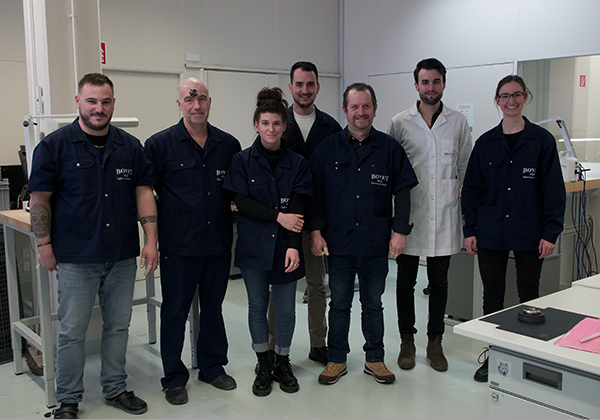
Basic decorations
Before getting down to serious business, I was encouraged to try my hand on the basic decorations which, as the engravers at the Manufacture’s decorations studio explained, also make the parts more resistant to the wears and tears of time. I was given a bridge to practice on (a fixed part that holds other, moving parts in place). First things first, I separated the bridge from the larger metal workpiece and ground the tabs that had remained attached to it. So far so good… though not for long! My next job was to satin-brush the surface then polish the edges to a sheen. Though not excessively complicated, both tasks meant that I had to always hold the tool at the proper angle while applying the right amount of pressure. What sounds simple enough in theory clearly isn’t in practice. The engraver sitting next to me, who was working on a Côtes de Genève decoration, was following more or less the same principles except in this case the result was flawless, with evenly spaced stripes, despite the added stress that the slightest imperfection, even if it wasn’t visible, would mean the piece ends up in the bin. Bovet prizes excellence as one of its values. Mr Raffy, I was told, believes the customer should be able to examine each part separately and every single one must be aesthetically perfect. A reasonable expectation, I’m sure you’ll agree.
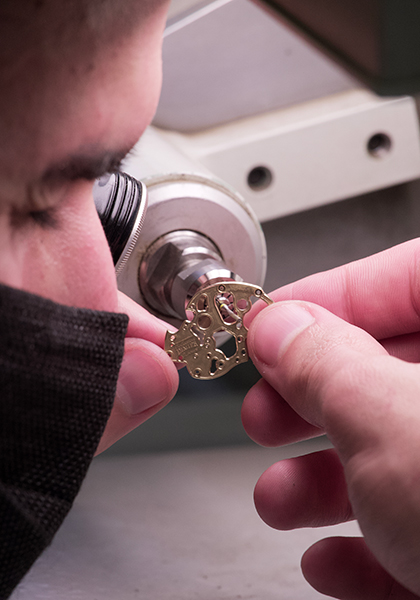
Despite being a generally patient guy, I’ve always had a hunch that spending entire days peering through a loupe or a microscope at tiny parts wasn’t for me. My one-day internship confirmed that. After just three-quarters of an hour, my eyes were out of focus and I was having trouble judging distances. This type of work, which requires constant attention to detail, isn’t something you simply “fall into”: it’s something you consciously choose to do.

Engraving
Four years at art school: that’s what it takes to become an engraver. And then? Rendezvous at Bovet, where the métiers d’Art take pride of place. Around a third of Bovet’s watches are personalised, be this the case, the dial or the movement parts. Any engraving demands patience and time; how much time depends on the complexity of the design and the amount of work required. One of the engravers told me about a special request for a dragon engraving that took three months to complete, from the time the customer supplied pictures of the desired motif to the finished dial.

Bovet is renowned for two types of engraving, both specific to the brand. They are Fleurisanne (stylised fronds and scrolls) and Bris de Verre (juxtaposed triangles, literally “broken glass”). Having attempted both, I’d say the latter was the easier of the two (more in my comfort zone, at any rate). My first try at Fleurisanne produced a graceful curve… which I was incapable of reproducing. The technique demands dexterity and coordination to hold the graver (or another tool) in one hand while using the other hand to move the workpiece. The straight lines of the Bris de Verre pattern were easier to execute: “simply” push the graver to cut into the metal. Obviously the end result was nothing like the work of Bovet’s experienced engravers, but I wasn’t too far off.
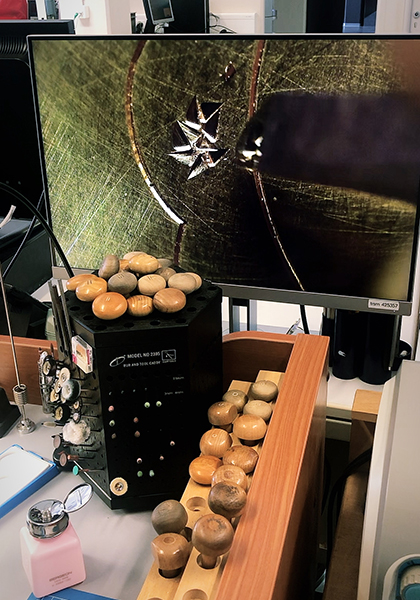
Just to round out my skillset, I also tried chasing, where a hammer is used to strike a punch (a steel rod). Again, my work lacked refinement but I did find this technique easier to master than Fleurisanne or Bris de Verre.
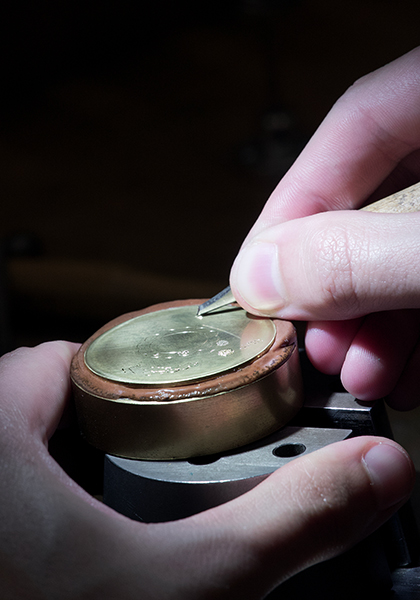
Bovet 1822, a unique watchmaker
This one day taught me that the decoration on a watch isn’t, as I had imagined, simply the finishing touch. It demands truly impressive skills and these métiers d’Art beautifully complement the mechanical aspect of the watch. At Bovet there cannot be one without the other, which is what makes this such a very special brand. Each piece is unique: no matter how many times the engraver executes the same pattern, the result will never be the same. This ability to create something unique is one of the reasons engravers are so enamoured with their job. It’s also something customers appreciate, and why so many choose engraving to personalise their watch.
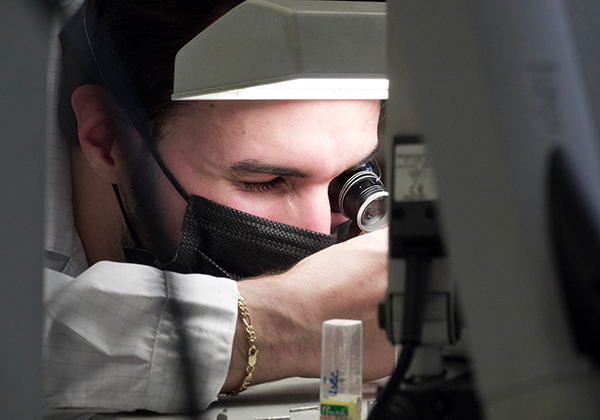
All’s well that ends well: the good people at Bovet were so impressed by my skills, they offered me a job. Just kidding! As much as I would love to have such talent, I’ll stick to writing!
And another internship to add to my CV!




